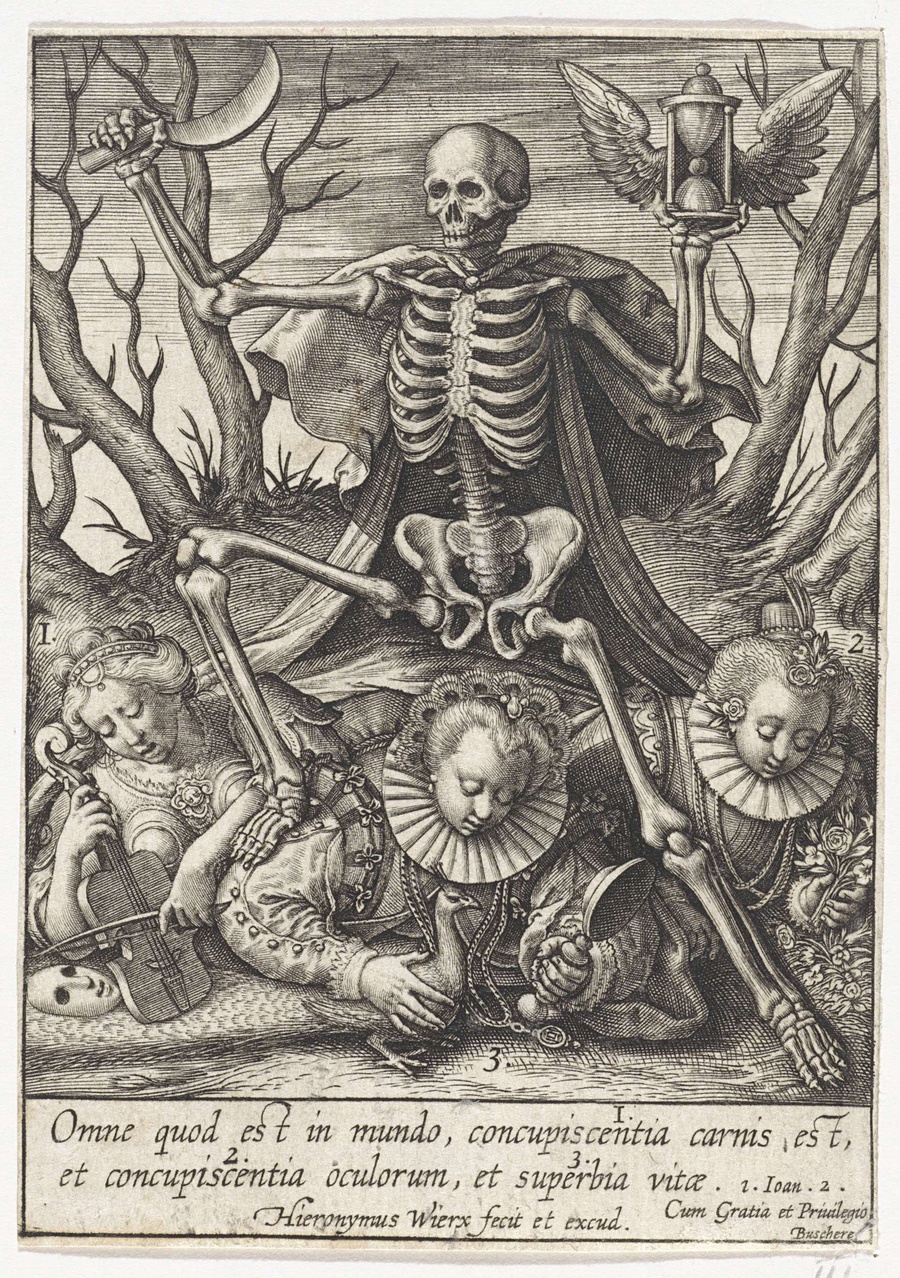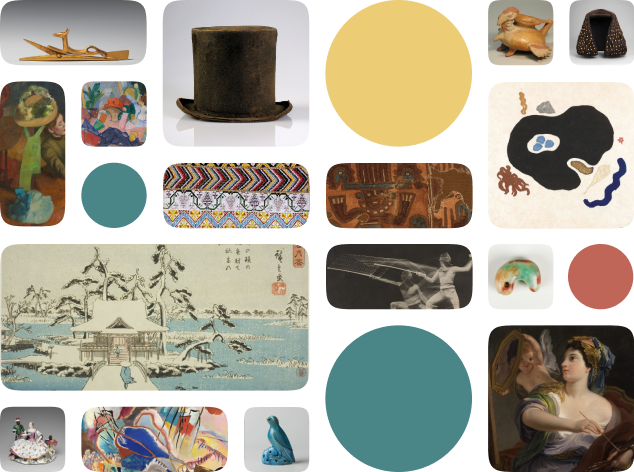About the work
"Memento mori" is a Latin phrase meaning "remember death is inevitable." The phrase guided religious worship throughout Medieval and Renaissance Europe. Imagery associated with the phrase warned against indulging in worldly pleasures.
Hieronymus Wierix was from a Flemish family of printmakers in the Netherlands. His engravings were largely religious in nature and supported the spread of Catholicism. In this print, Death is personified as a skeleton. He stands on three women who represent Wealth, Desire, and Pride. The Latin inscription translates to "All that is in the world is the lust of the flesh, and the lust of the eyes, and the pride of life" (1 John 2:16). The rest of the Bible verse advises turning away from fleeting pleasures to religion.
Hieronymus Wierix was from a Flemish family of printmakers in the Netherlands. His engravings were largely religious in nature and supported the spread of Catholicism. In this print, Death is personified as a skeleton. He stands on three women who represent Wealth, Desire, and Pride. The Latin inscription translates to "All that is in the world is the lust of the flesh, and the lust of the eyes, and the pride of life" (1 John 2:16). The rest of the Bible verse advises turning away from fleeting pleasures to religion.
Rijksmuseum Object Description
De Dood vertrapt drie rijk geklede dames die respectievelijk verlangen, rijkdom en trots personifiëren. In de marge een tweeregelig Bijbelcitaat uit Joh. 2 in het Latijn.
Work details
"--" = no data available
All Works in Curationist’s archives can be reproduced and used freely. How to attribute this Work:
.

